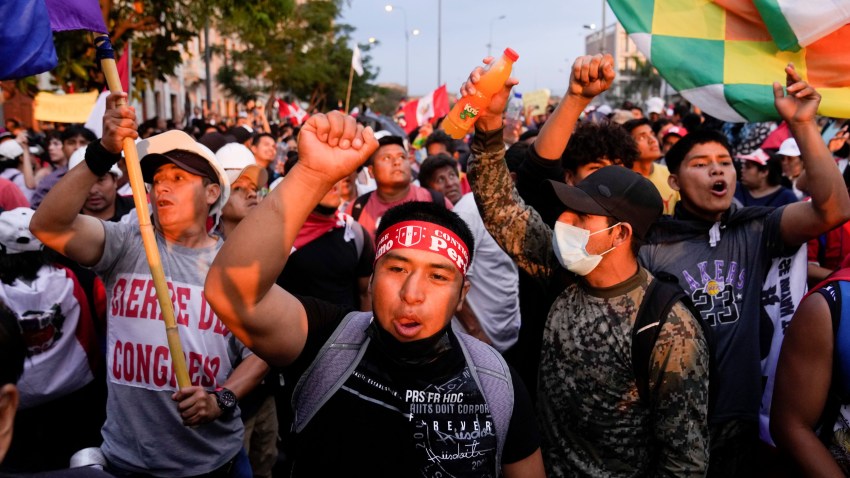The anger is the same in Peru and Venezuela, where the first month of 2023 has seen two powerful examples of leaderless protest movements affecting government stability. Even though the status and legitimacy of the two countries’ governments are vastly different, the protesters in both countries aren’t in the streets due to academic debates over democratic succession and legal recognition. Protesters are angry at political systems that are failing them.
Protests in Peru last week led to the government extending and strengthening the state of emergency, including a curfew in the province of Puno where protests have been most violent. Images of a fire in Plaza San Martin in Lima on Thursday made international headlines and served as a reminder that the capital, where the Peruvian political elite often live in a bubble, is not beyond the protesters reach.
Over 50 demonstrators have been killed by security forces since the start of the protests in the days after former President Pedro Castillo was impeached and imprisoned in December, and hundreds more have been wounded. Many of the deaths are due to the use of excessive force by security forces in repressing the demonstrations. According to polling by the Instituto de Estudios Peruanos, or IEP, while a majority of Peruvians disagree with the protesters using violence and causing damage, a majority also agree with their grievances in a general sense. Both IEP and Ipsos polling show that a majority also disapprove of Peru’s new president, Dina Boluarte, and the Congress.

